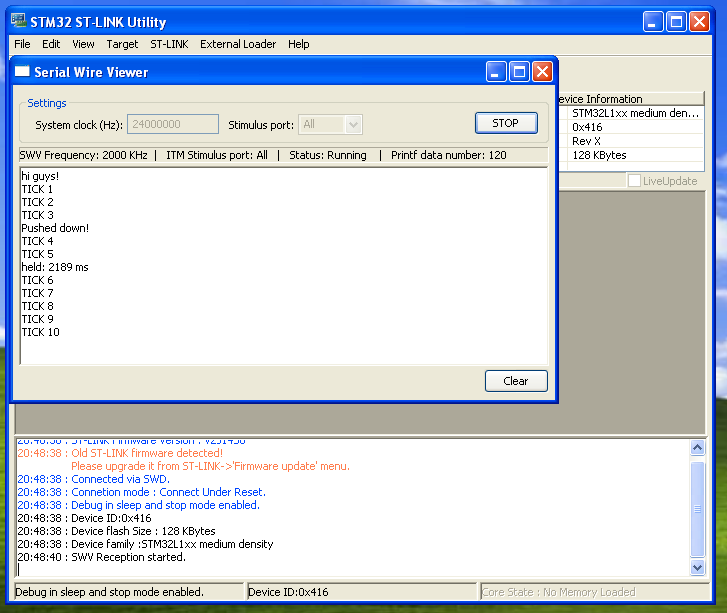This is part 1 in a short series about using the SWO/SWV features of ARM Cortex-M3 devices [1]
This post will not explain what SWO/SWV is, (but trust me, it’s cool, and you might work it out by the end of this post anyway) but will focus on how to use it.
First, so you have a little idea of where we’re going, let’s start at the end…
enum { STIMULUS_PRINTF }; // We'll have more one day static void trace_send_blocking8(int stimulus_port, char c) { while (!(ITM_STIM8(stimulus_port) & ITM_STIM_FIFOREADY)) ; ITM_STIM8(stimulus_port) = c; } int _write(int file, char *ptr, int len) { int i; if (file == STDOUT_FILENO || file == STDERR_FILENO) { for (i = 0; i < len; i++) { if (ptr[i] == '\n') { trace_send_blocking8(STIMULUS_PRINTF, '\r'); } trace_send_blocking8(STIMULUS_PRINTF, ptr[i]); } return i; } errno = EIO; return -1; } |
You can get this code from either:
- My github repository
- The
swo-1-printfdirectory in swo-stlink-linux-1That’s all[2] you need to have
printfredirected to an ITM stimulus port. It’s virtually free, doing nothing if you don’t have debugger connected. [3]Groovy. If you have the Windows STLink Utility, you can use this right now. Enter the correct clock speed of your main app, and choose stimulus 0 (or all) and watch your lovely console output.
Ok, that’s cool, but weren’t we going to do this in linux? We were, and we will, but let’s stop here with a good working base, so we can focus on just the extra stuff later.
[1] Cortex M4 too, but not M0, that’s another day altogether. Specifically, STM32L1 parts, but the concepts and code are the same
[2] Expects you have your general makefiles all set up to do “the right thing” for newlib stubs and so on.
[3] Except for generating the formatted string of course, that’s not free. And it does take a _little_ bit of time to write the characters out without overflowing, but that’s a story for another day.

1 Comments.